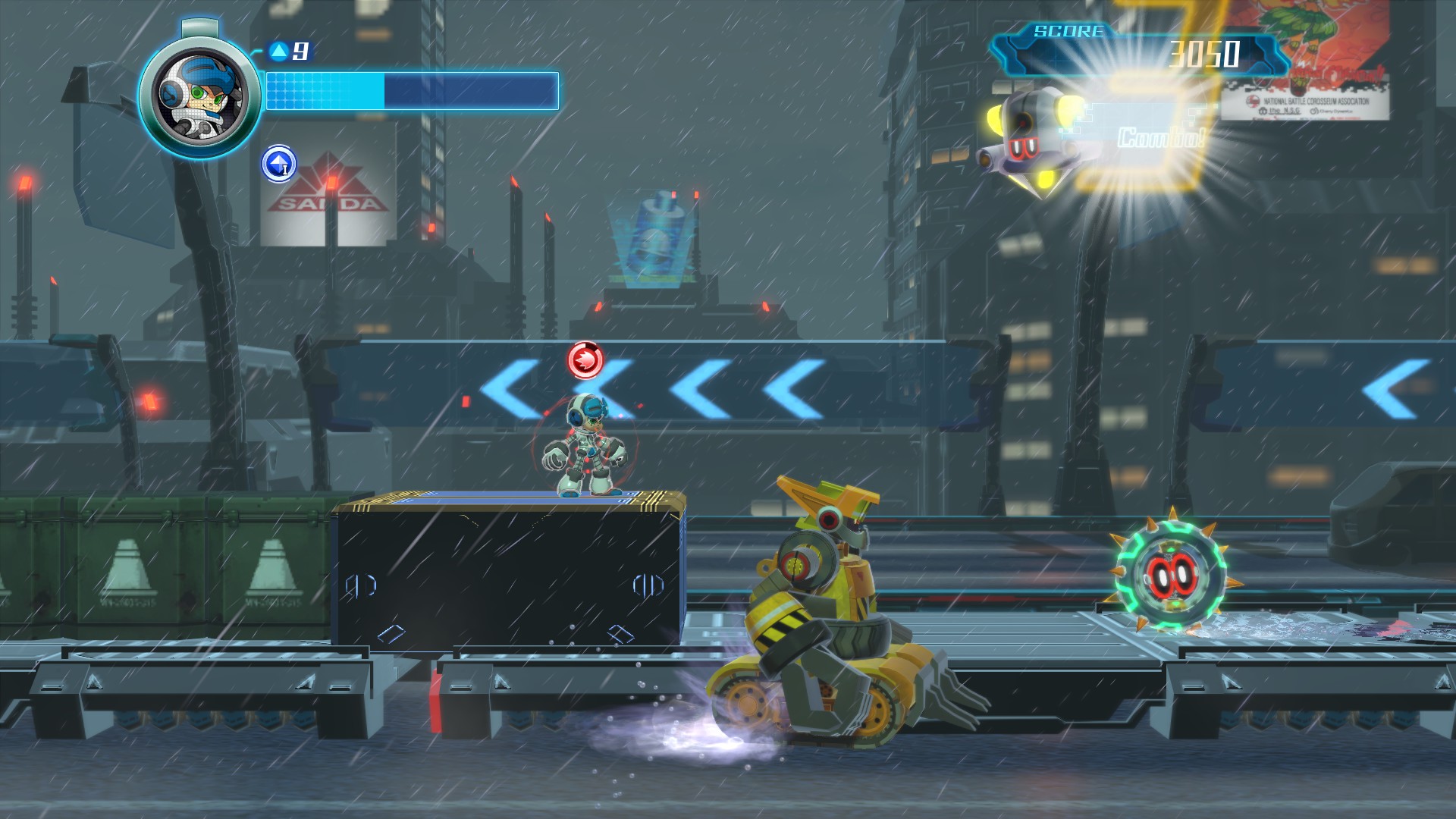Sonic Rush is a 2.5D platformer released for the Nintendo DS in 2005 developed by Dimps. It was the game to introduce the boost system to the series, which would later be brought back in Sonic Unleashed. It's often referred to as a spiritual successor to the GBA games, Sonic Advance.
(Legacy)-1.png)
Mighty No 9
Mighty No 9 was a kickstarter project from 2016 by Level-5 Comcept, which was funded $4,069,579. It was advertised as a spiritual successor to Mega Man, and even had the character designer of Mega Man, Keiji Inafune, work on the concept art.

Prices
The price of Sonic Rush at launch can't be found, however I'm assuming it must of been £20-£30, like the price of most DS games at launch. However now it can be found for just around/under £10 from most places, such as CEX. Mighty No 9 costs £15.99 on digital stores, and around/under the same price in physical form.
Target Audience
Sonic Rush had a wide target audience. It was aimed at fans of both the main series, and fans of the Sonic Advance games on GBA, and the fans of the classic Sonic games with the special stages. It was also aimed at almost anyone, since it was easy to pick up and play. The target audience for Mighty No 9 was also aimed at anyone, but classic Mega Man fans in particular, since it was a spiritual successor, and had parts of the original developers working on it too, such as the soundtrack composer, and the previously mentioned character designer.
Platforms
Sonic Rush was released as an exclusive to the DS. However, it can be played on 3DS through backwards compatibility, and PC/mobile through emulation. Whereas Mighty No 9 was released for a wide range of consoles:Windows, PS3, PS4, Wii U, Xbox 360 and Xbox One. However, it was also supposed to release for 3DS and PS Vita, which it still hasn't. They were said to release at the end of 2017, and there still hasn't been any updates. They weren't cancelled, and the 3DS version is still available to pre-order on Amazon.
Reviews
Sonic Rush was received a lot of positive reviews, and was the ninth best selling DS game in 2006. It received a Platinum sales award, meaning it sold over 300K copies in the UK. It was praised for its "gorgeous graphics" and for its soundtrack, composed by Hideki Naganuma, who also composed Jet Set Radio's soundtrack. It was ranked #17 in IGN's top 25 best DS games.
Mighty No 9, on the other hand, received average reviews, with the Wii U version getting the worst reviews due to technical issues. It was called "charmless" and had "poorly executed ideas". There was apparently too much content recycled, copy and paste designs and failed to entertain. It continued to receive more bad reviews due to the constant delays. It was originally announced in 2013, but got pushed back to 2016. The Xbox 360 version was pushed back a day later than the other versions. The game was considered a scam, considering how much is lacked for the amount of money it was funded, and not receiving the PS Vita and 3DS versions, which still haven't been released to this day.